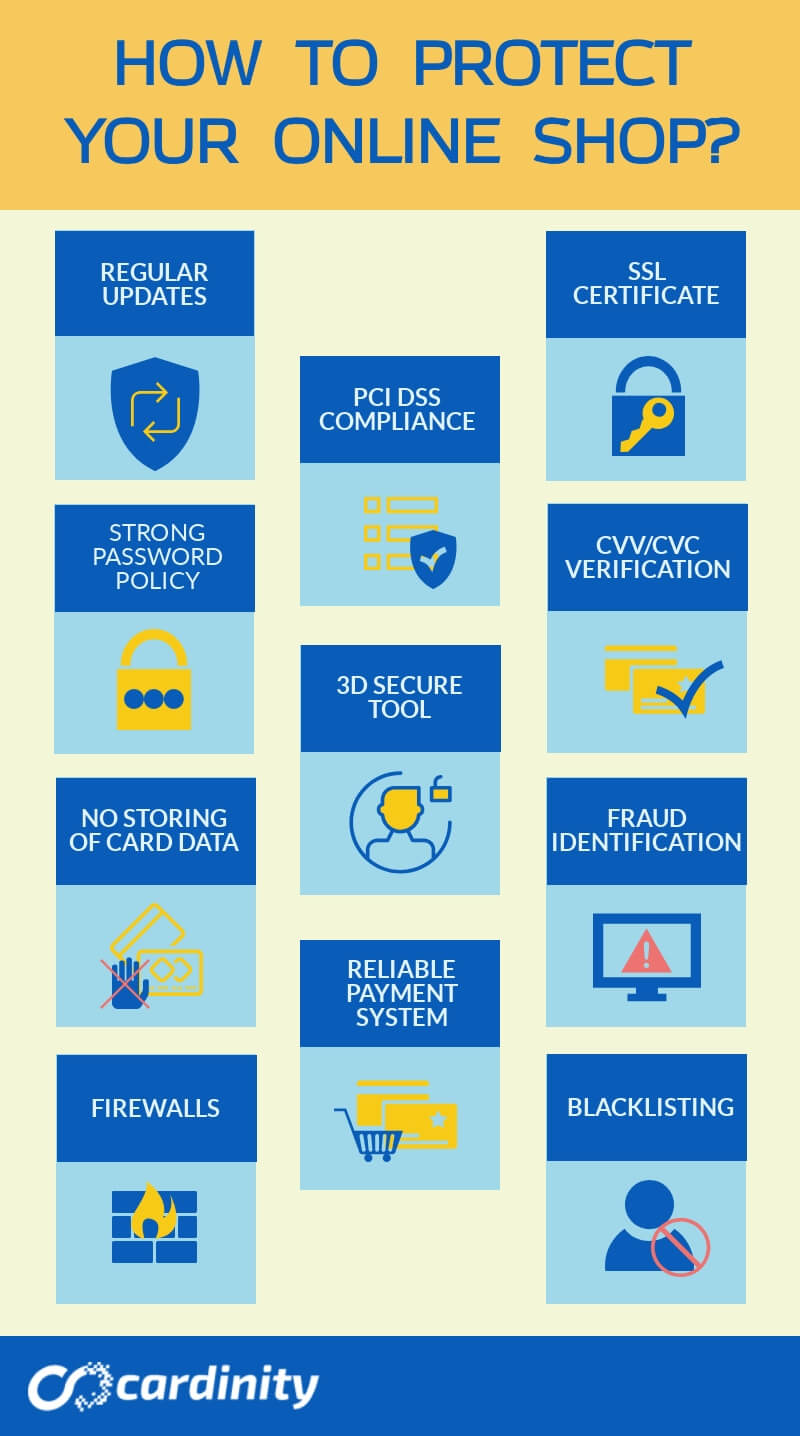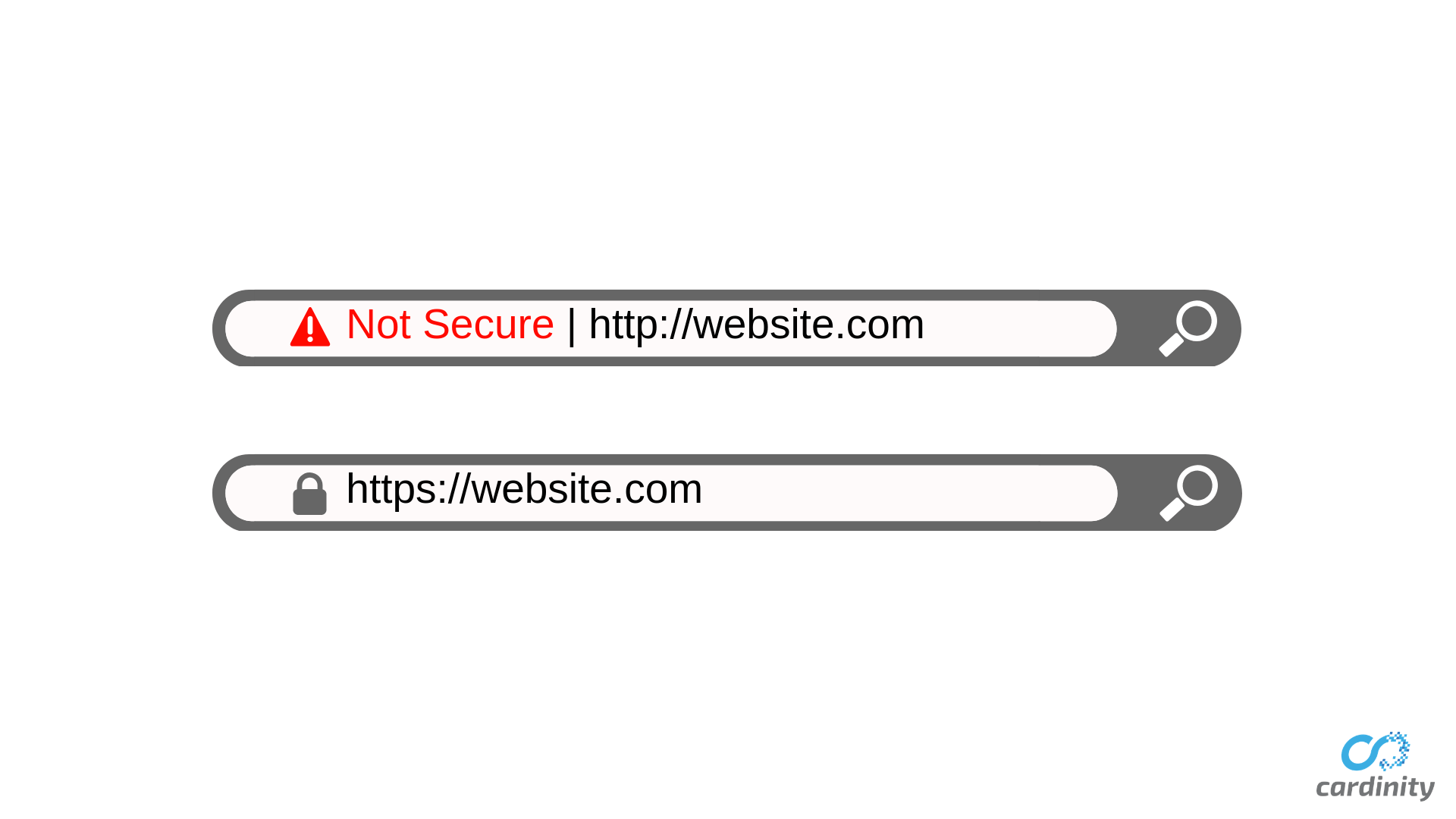How to Protect Your Online Shop? 11 Crucial Steps
As an online merchant, you are supposed to ensure your customers’ data protection when they are making payments in your online shop. As more buyers tend to purchase goods and services on the internet, more possibilities of cyber crime appear. Your responsibility is to take all the necessary measures to protect your online shop, prevent identity theft, payments with stolen cards and other illegal transactions.
No matter whether you are a small or a large business, you are always exposed to possible data breaches and fraudulent activities if you have not taken some essential steps towards your website’s security. These steps will not only help you reduce risks of online fraud, but will also develop potential buyers’ trust in your e-shop.

Get an SSL Certificate
First of all, get a valid SSL certificate from a Certificate Authority. SSL (Secure Sockets Layer) is a standard technology that keeps all the sensitive information sent between you and your customer encrypted and protected from fraudsters. By making your website SSL-secured, you also save it from malware and hackers.
The address of an SSL-secured website begins with https rather than http. When customers see a lock icon on the address bar, they recognize your website as secure and reliable. In addition, SSL improves your website’s ranking on major search engines! You can read another blog article to find out more about the benefits of SSL.

Comply with PCI DSS
Every online merchant and every payment service provider must comply with Payment Card Industry Data Security Standard (PCI DSS). In brief, PCI DSS is a compulsory set of requirements that you are supposed to meet in order to reduce the risk of any criminal activity related to storing and processing card data. You should not forget to maintain the security of your system by monitoring your website and networks regularly. Cardinity has the highest level of PCI compliance. We help merchants to reduce fraudulent transactions and process card payments in a secure way.
Activate 3D Secure
Sometimes an SSL certificate and PCI compliance are not enough to ensure efficient protection from data thieves. In this case, you should activate 3D Secure which is an additional layer of security. It is an authentication window marked with MasterCard SecureCode or Verified by Visa logos in which a customer should enter a personal security code in order to verify that he/she is a genuine cardholder.
3D Secure protects buyers against unauthorized card use and, as a result, significantly reduces online fraud. Cardinity activates 3D Secure tool for every client free of charge.
Verify CVV/CVC
Request your customers to type their CVV (Card Verification Value) or CVC (Card Verification Code) code (a 3-digit number located on the back of your credit or debit card) which serves as the card’s security code. Your customer should provide this number in order to verify that he/she actually has the physical card.
Identify Signs of Fraud
As you have a lot of information about your customers, you are able to identify potential fraud. We have laid down fraud identification guidelines which will draw your attention to the earliest signs of fraud. You can learn more about our fraud prevention measures here.
Apply Blacklisting
In case you have already faced hacker attacks or fraudulent activities, you can blacklist a particular untrustworthy customer and his IP address, and he will never be able to purchase in your online shop again. You can keep a record of the information about suspicious customers and blacklist them not only by IP address but also by e-mail address, credit card number, country or city.
Put Up Firewalls
You need to safeguard your website from various cyber attacks, such as malware, viruses, SQL injections, DoS (Denial of Service) and DDoS (Distributed Denial of Service) attacks. Hackers often try to flood your network, so that legitimate customers wouldn’t be able to access it. Setting up a firewall will prevent such attacks from happening in your network. A firewall monitors traffic that comes to your server. It warns you in case of any suspicious activity and blocks malicious attacks. Remember to properly configure a firewall in order to permit legitimate users to access your network.
Do Not Store Cardholders’ Data
Make sure that after a successful payment authorization, you do not store any private cardholder data, such as CVV codes, card expiration dates, etc.
Implement Password Policy
It won’t take long for hackers to get a simple 5-character password. That is why you should encourage your customers to use stronger passwords for logging in their accounts in your e-shop. Develop the password policy, so that the passwords could not be too simple or too short.
Update Regularly
In order to keep your online shop protected, update your system and software regularly. Don’t forget that your SSL certificate also needs to be renewed from time to time. In addition, get rid of all the outdated and unnecessary plugins. The latest versions of software usually have all the bugs fixed.
Choose a Reliable Payment Service Provider
If you choose a payment service provider like Cardinity that complies with PCI DSS, credit and debit card payments carried out on your e-commerce website will become much safer. We will safeguard you and your customers as well as take care of your transactions.
Open a merchant account for free
and start processing payments with Cardinity!
